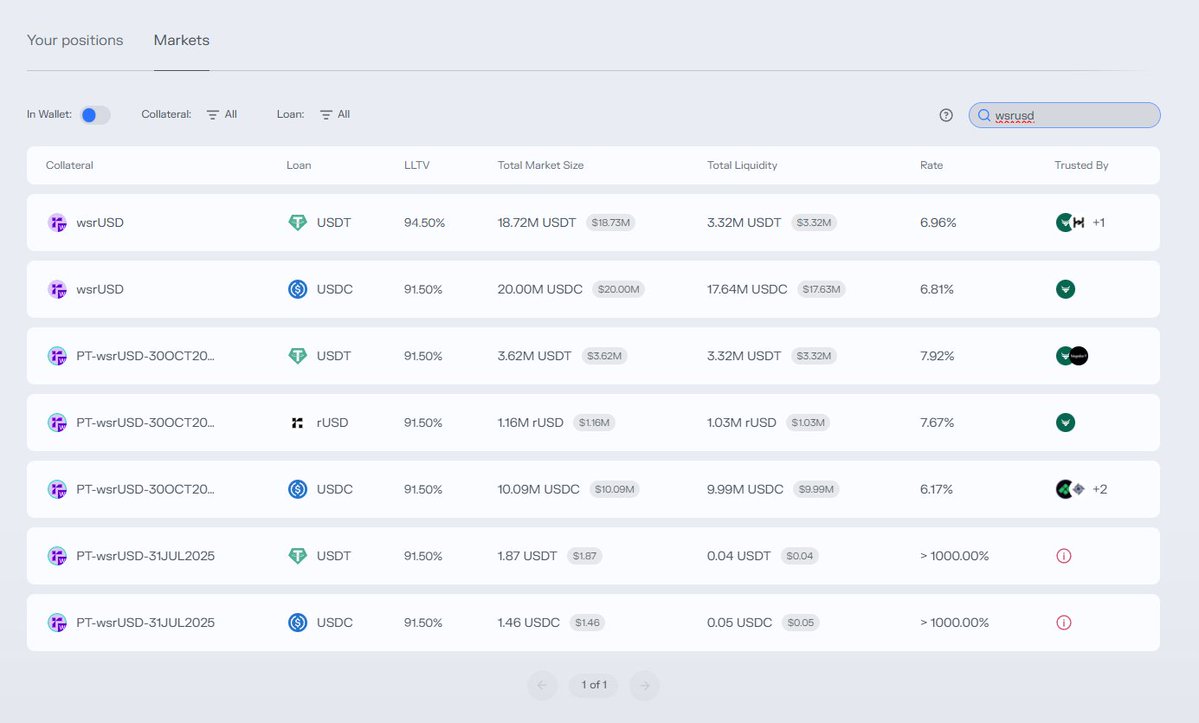
"The Calculator Guy"
Founder of DeFi Dojo
"A truffle sniffer, but for yields."
Wildly Christian | Father of Four
26 subscribers
How to get URL link on X (Twitter) App


 The first thing to realize is that the Monad campaign is much smaller than, say, @Plasma, though also substantially less farmed than Plasma.
The first thing to realize is that the Monad campaign is much smaller than, say, @Plasma, though also substantially less farmed than Plasma.

https://x.com/phtevenstrong/status/1978844261794631697
 1) @reservoir_xyz wsrUSD/USDC loop on @MorphoLabs
1) @reservoir_xyz wsrUSD/USDC loop on @MorphoLabs 

 Gold is difficult to get a native yield on. Virtually all gold yields involve collateralizing a gold derivative and farming against borrowed stables.
Gold is difficult to get a native yield on. Virtually all gold yields involve collateralizing a gold derivative and farming against borrowed stables.

 1) @summerfinance_
1) @summerfinance_ 

 1) @reservoir_xyz yields are remarkably slept on.
1) @reservoir_xyz yields are remarkably slept on.



 1) Aavethena
1) Aavethena



 1) @summerfinance_
1) @summerfinance_ 

https://twitter.com/Route2FI/status/19673310177501473401) The Contango / Basis (no, not the protocol)


 The play is very difficult to understand if you just read the details on Aave (no shade, @lemiscate, I love you guys).
The play is very difficult to understand if you just read the details on Aave (no shade, @lemiscate, I love you guys).



 First, let's look at how users get farmed and lose money through simple lack of diligence or understanding...
First, let's look at how users get farmed and lose money through simple lack of diligence or understanding...

 1) Lend Aggregators
1) Lend Aggregators

 1) @summerfinance_
1) @summerfinance_ 

 1) beHYPE on @0xHyperBeat
1) beHYPE on @0xHyperBeat 

 We know that there will be 51M hearts.
We know that there will be 51M hearts.
 1) Everyone's new favorite vault on @HyperliquidX
1) Everyone's new favorite vault on @HyperliquidX 

 1) Let's start on @solana
1) Let's start on @solana 


 1) @summerfinance_'s Lazy Summer
1) @summerfinance_'s Lazy Summer

 FWIW, I'm not a Stream ambassador, but they have a great team, and I love good stablecoin yields.
FWIW, I'm not a Stream ambassador, but they have a great team, and I love good stablecoin yields.